Private Property
"No Trespassing" book update and a little photo journey . . .
Do you ever think about private property? I think about it constantly, in interactions online, real-life conversations, sitting in “my” yard near “my” caragana bushes drinking “my” tea and reading “my” book, or walking along the public riverside trails around town, or when I mention “my” kids.
I think about it in particular every time I see a sign like the above. What makes this land “property,” and what makes it private? And why do so many humans think that these rights and laws are static, fixed, forever unchanging? I recently finished reading Neal Ascherson’s book Black Sea, about the millennia of human history surrounding the Black Sea, and if one thing is certain it’s that models of rights, property, and ownership will never remain the same in any given region.
After my Dear Butte writing residency finished last week, I spent a few days driving through Montana’s Gallatin Valley, where I mostly grew up, and then up to Fort Benton on the Missouri River, down through the Golden Triangle and Big Sag, where my mother grew up. One of the gifts of having time and space to yourself for a long period is that buried ideas start to work their way loose. In this case, it was realizing that the first chapter of No Trespassing (which is about land ownership) needed less research and more of a sense of place.
Morning birdsong that kept my notebook closed and my ears open while sitting on a bank of the Missouri River
I will be posting the introduction to No Trespassing next week. A couple of things:
1) I’ll be turning off comments for book chapters. I want these to feel like a book you’re reading (which it is!) rather than posts or other media you need to keep up with. You can email me or make comments on other posts about them or write me a letter or whatever you like, including nothing at all, but the point is that you should be able to read these in your own time with your own thoughts. Or don’t read them! Take a nap! Go for a walk!
2) I’ve been talking with the local copy shop about options for printing and lightly binding these chapters for anyone who would like to have print copies sent. If you would like a print version, you’ll have to send me (amalchik@gmail.com) a mailing address, though of course you can always print them out yourself. I’m trying to find a version that you can recycle easily, but that’s harder than I thought it would be unless I leave the pages completely loose.
(I’m not trying to be fancy about this with the copy shop. I replaced the drum in my printer recently in a desperate effort to not have to buy a new printer, and now everything comes out slightly blurry. It’s also more cost-effective to use the copy shop’s toner instead of my own.)
If you’ve been hedging on whether or not to upgrade to a paid subscription, now is a great time. This whole endeavor is pretty research-intensive. An overview of No Trespassing’s chapters and structure is here.
No Trespassing is about how the struggle between private property and the commons has shaped human histories and will shape our futures. It’s about ownership, which is an amorphous concept whose genesis has been theorized but I doubt will ever be known. Ownership dictates almost everything about our shared lives on this planet, while being so embedded in thinking, values, and laws that it’s almost invisible.
My goal with this book is to bring ownership out into the light. Just because we don’t know where it came from does not mean that we can’t know what it is and how it’s used. The introduction of No Trespassing will get into that a bit, and of course there’s always the collection of short posts I wrote to accompany the Threadable land ownership readings.
Ownership is about far more than land, but the further I read and think about this idea, the more it seems to me that the legal concepts buttressing ownership’s legitimacy grew from two things: how humans own land (and justify that), and how humans treat water (and justify it). And in some places those two things were intertwined millennia ago to justify control of women, reproduction (including seeds), and bodily autonomy for almost everyone. Huge concepts and debatable ideas, all of these, but I think this is where things start from.
For this book, I start with land. Chapter 1 of No Trespassing, on land ownership, will I hope be ready for you by the end of September. It’s centered slightly more on Europe and England than North America because I’m looking for the beginnings of the private property structures we live under—the theft of the commons—as well as at their consequences. The transition from land ownership on the European continent to justifications for spreading that ownership, theft, and oppression worldwide through the Doctrine of Discovery is a hinge point. The chapter itself begins with the regions now known as Montana because that is the land I love most and the land that made me.
Here are the tentative beginnings that I was thinking about as I drove through the landscapes in these photos:
If I wanted to walk those hills, I couldn’t. There’s the barbed wire, stretching for miles across the wheat fields and cattle pastures, out of sight. Even stronger is the psychological barrier that says, “This is private property. You cannot trespass.”
Imagine what this land once was, well over ten thousand years after the overflow of Glacial Lake Great Falls carved the Shonkin Sag and tens of millions of years after volcanic eruption formed what are now called the Highwood Mountains. Imagine the wheat fields covered in unfenced prairie, steppe, and buffalo. All this land is now bound up in an entirely different story, a legal one of private property and the more recent justification known as “stewardship”—better taken care of, but that same care being used to defend continuing private ownership along with the original theft.
Many of those who own land here are descended from people given the initial acreage in exchange for a small fee, as my own ancestors were. By what right? This question is anything but abstract: Where did the U.S. government get its right to first steal, and then give away, people’s land? Was it a legal right? A divine one?
Where does anybody get the right to own land at all? Does this right actually exist, or is it simply a mythological overlay spread upon theft? The more I read of land ownership’s early years, the more it seems that the taking came first, and the justification afterward: laws written and philosophies shaped over the centuries to bolster claims to something that those with more power wanted to call their own.
A couple of the questions guiding my writing on this right now: Where did this idea come from? What are people so afraid of losing if we let it go? (Also there’s a lot of geology embedded through parts of No Trespassing because I love geology and deep time.)
Where my grandfather ranched in east-central-ish Montana, there’s wheat fields and cattle pasture on all sides, some fenced, some not, all bound by the rules of property ownership. And by the rules, evidently, of rural life, no road signs required. (GPS will not help you out here. There’s very little if any service.)
You could walk out to Square Butte (below) from the edge of this tiny town. Except you can’t: your gaze might be free to cast itself across the fields and hills to that ridgeline, but your body isn’t. That land is private property, and you cannot step on it without permission.
I love this part of the state, honestly, despite the barbed wire and mostly monocropped farmland (with notable exceptions of farmers working on no-till practices, cover crops, organic lentils and kamut, and any number of other methods to nurture soil instead of strip-mine it) and cows instead of bison and insistent “no trespassing” signs. Every time I approach it, driving south from the Hi-Line or east from Great Falls, I can’t help imagining what it once was, what it could be again. With buffalo back instead of cows, and prairie grasses instead of fertilizer-fed and weedkiller-protected wheat.
I spent six hours driving these lanes, pulling out the atlas to figure out which dirt road to turn down next—which didn’t always help; I got lost twice after hitting road-splits that weren’t on the map and had no signs—watching the Highwood Mountains approach and then recede, dipping down into the Big Sag and up out again, listening to black metal musician Blackbraid or silence, frequently turning off the car and getting out to listen to the birds. I didn’t stop at a single spot the entire time where there wasn’t at least one meadowlark singing.
Meadowlarks, mud-rutted tracks that remain a warning about the gumbo stickiness of these roads in wet weather, one field covered in prairie dog housing and noisy with their chirps, curlews and yellow-headed blackbirds, many wary pronghorn, and milkweed that appeared among the intermittent sage and wildflowers, a plant I never expected to see near American farmland.
Prairie dogs and friends
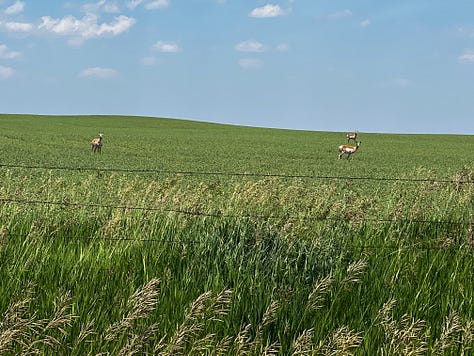
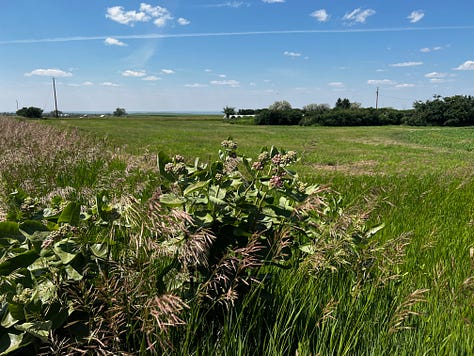
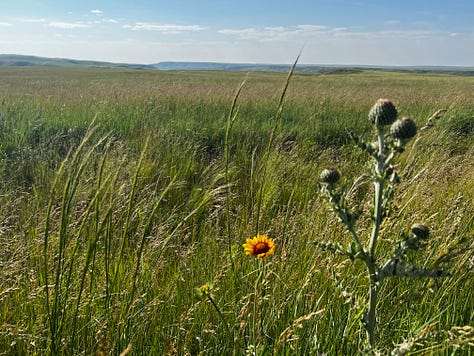


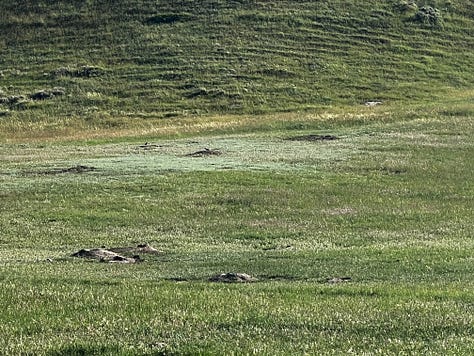
Don’t your feet ache to scramble along those rocks below, to feel with your body and not just your mind why this area is called Big Sag? Mine did. They still do, even just looking at the photo. But there’s the fencing, both physical and psychological. The air can still move freely. It brought meadowlark song from some distance away and the scent of white sage from my hands because I kept rubbing their soft leaves wherever I saw them.
Our time in this life is brief. Let’s make it rich, and make it better, and not just for ourselves. Let’s figure out where we’ve been and where we’re going and what fences we can take down along the way. Even if, once in a while, we take a wrong turn.
Where the hell am I? “You’re on your own, kid. You always have been.” Though more accurately somewhere in the tangle of dirt roads knotted up near White Lake in grid A9.



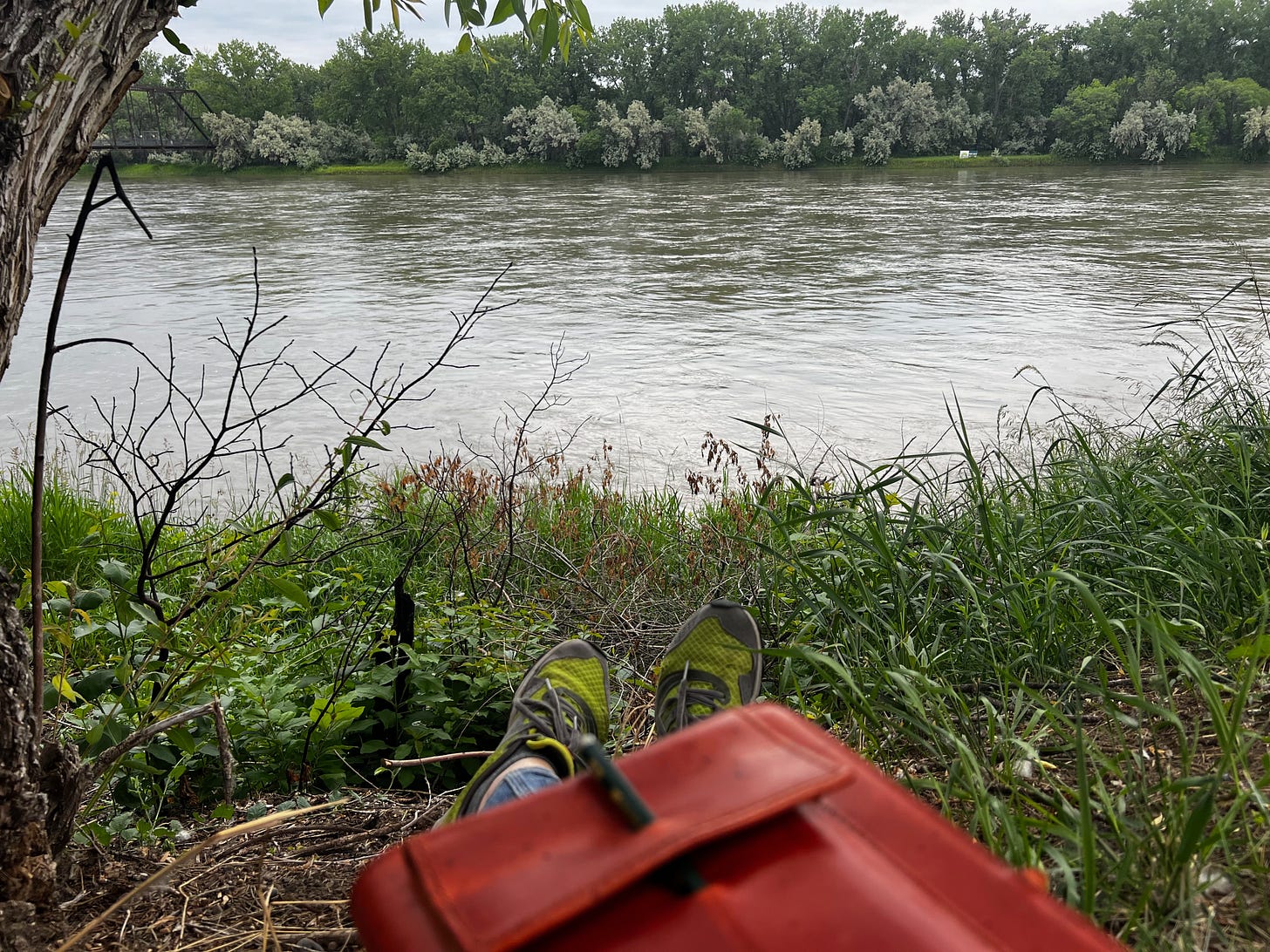
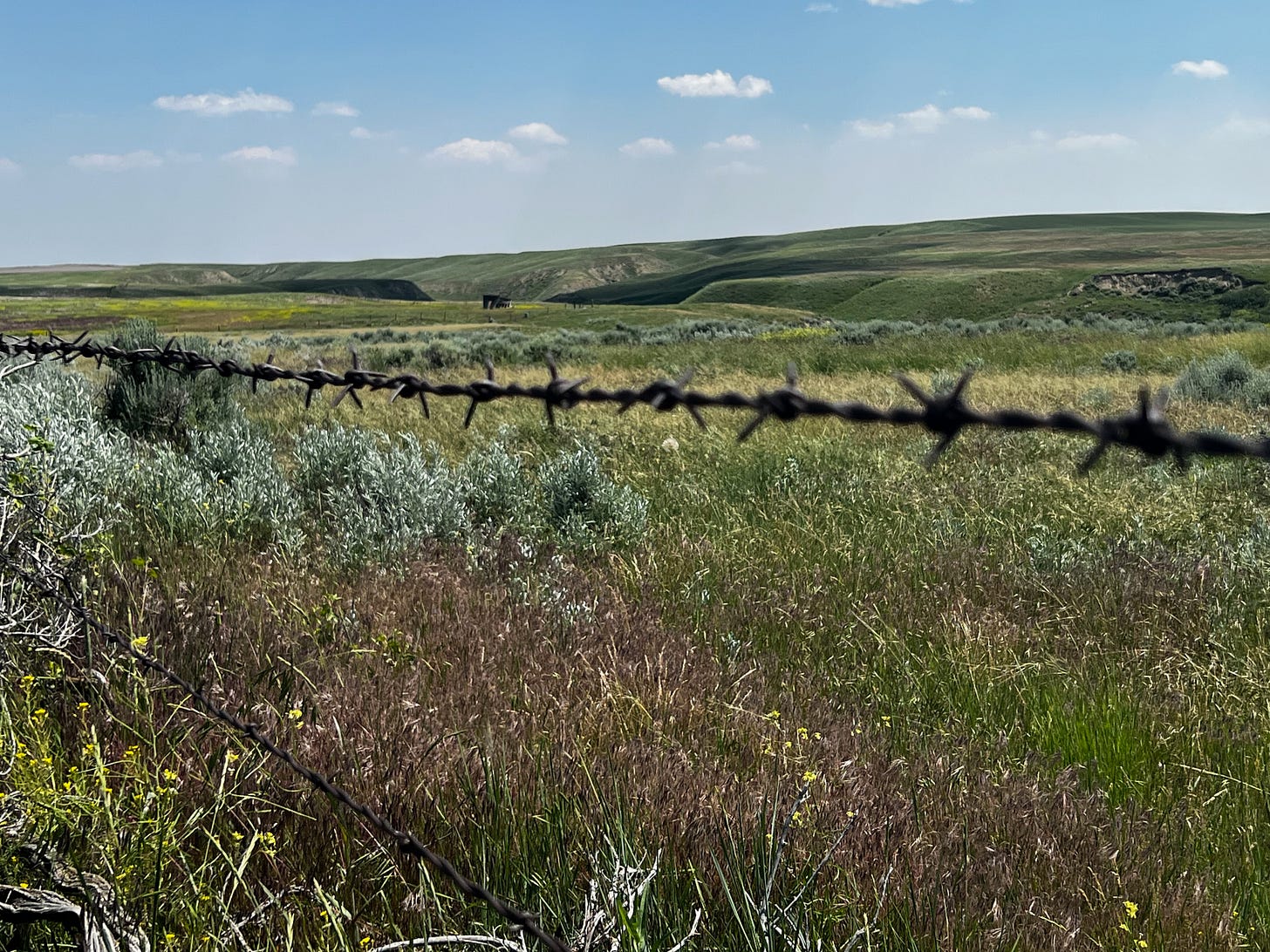


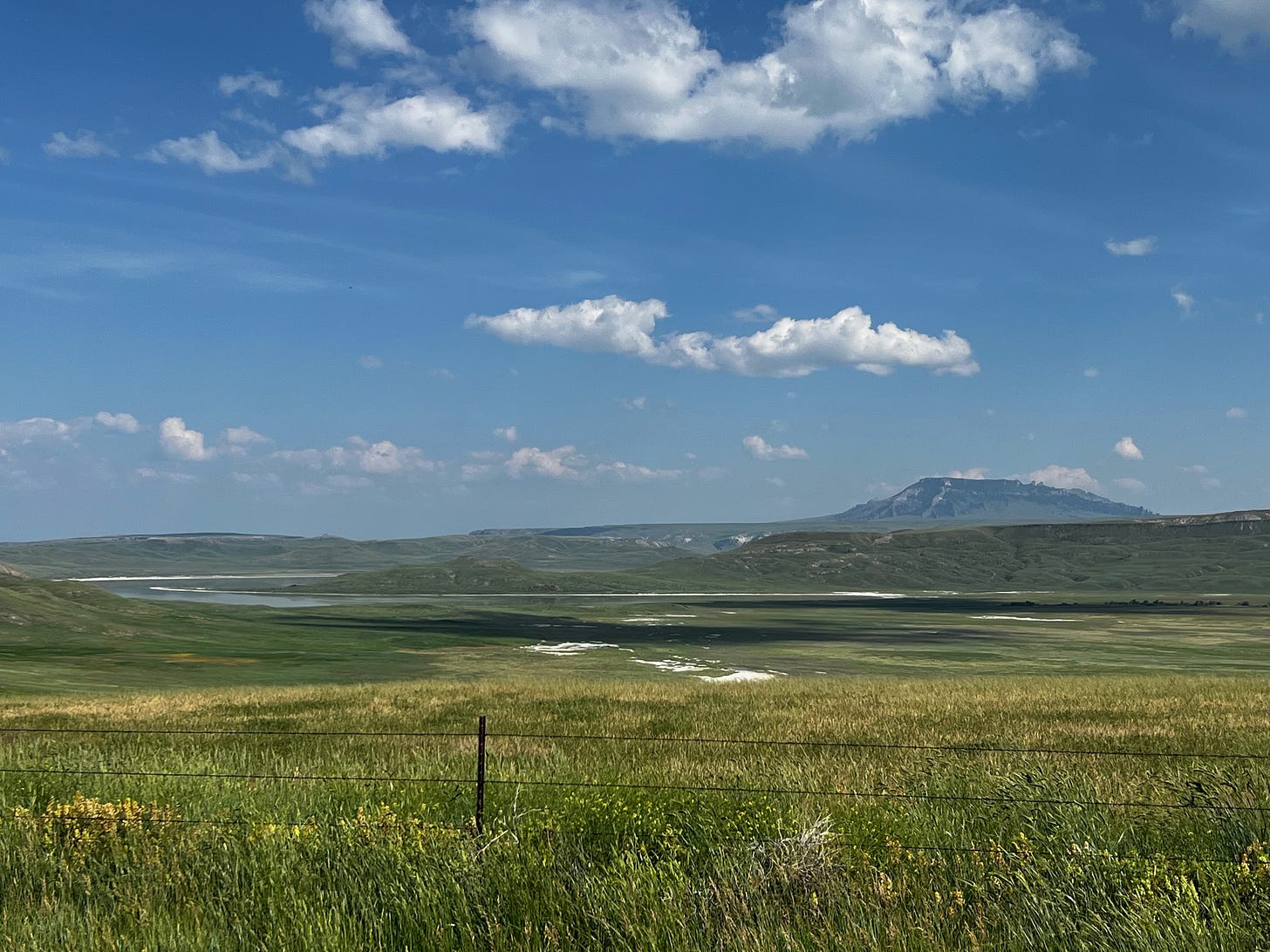
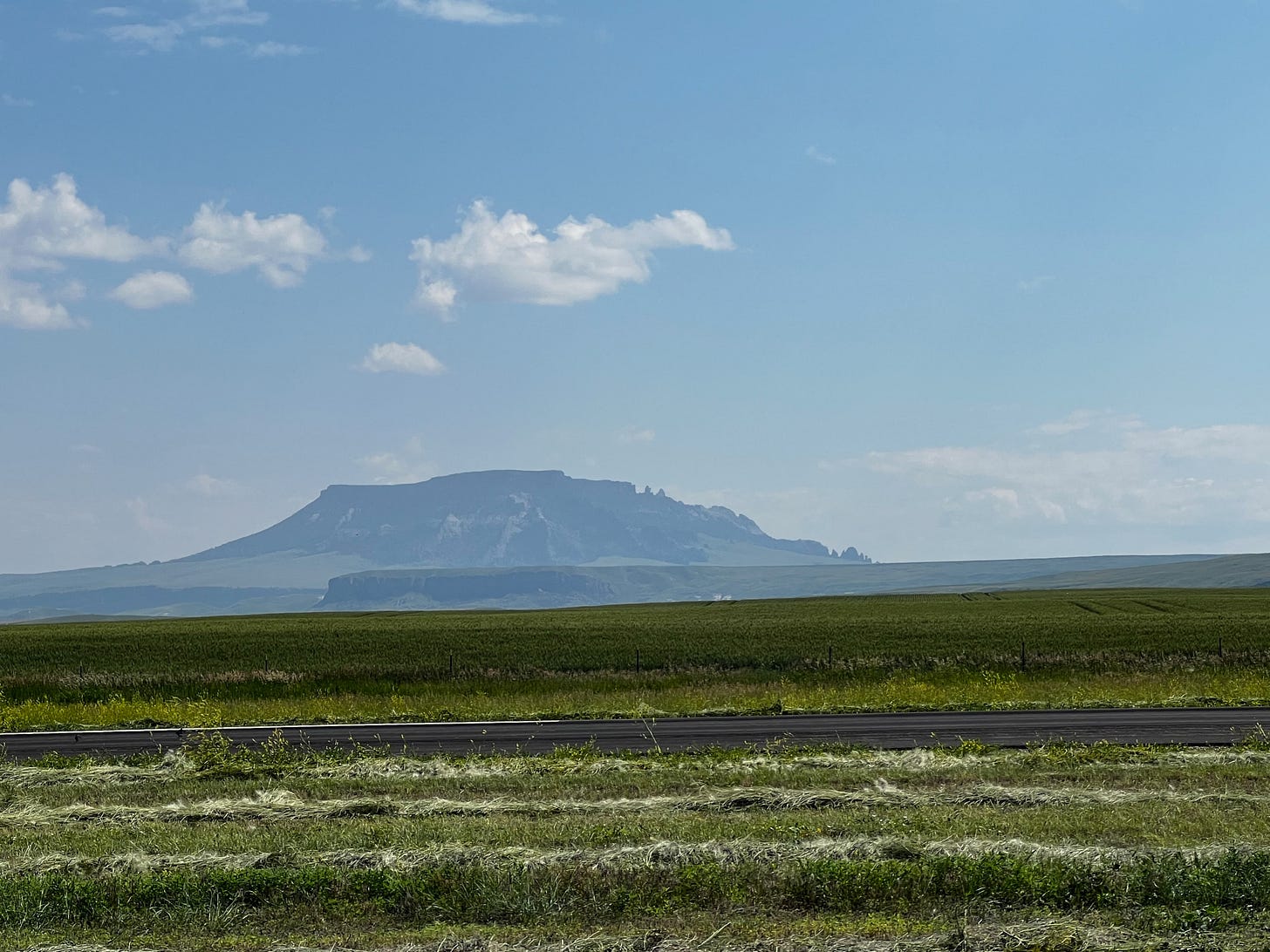

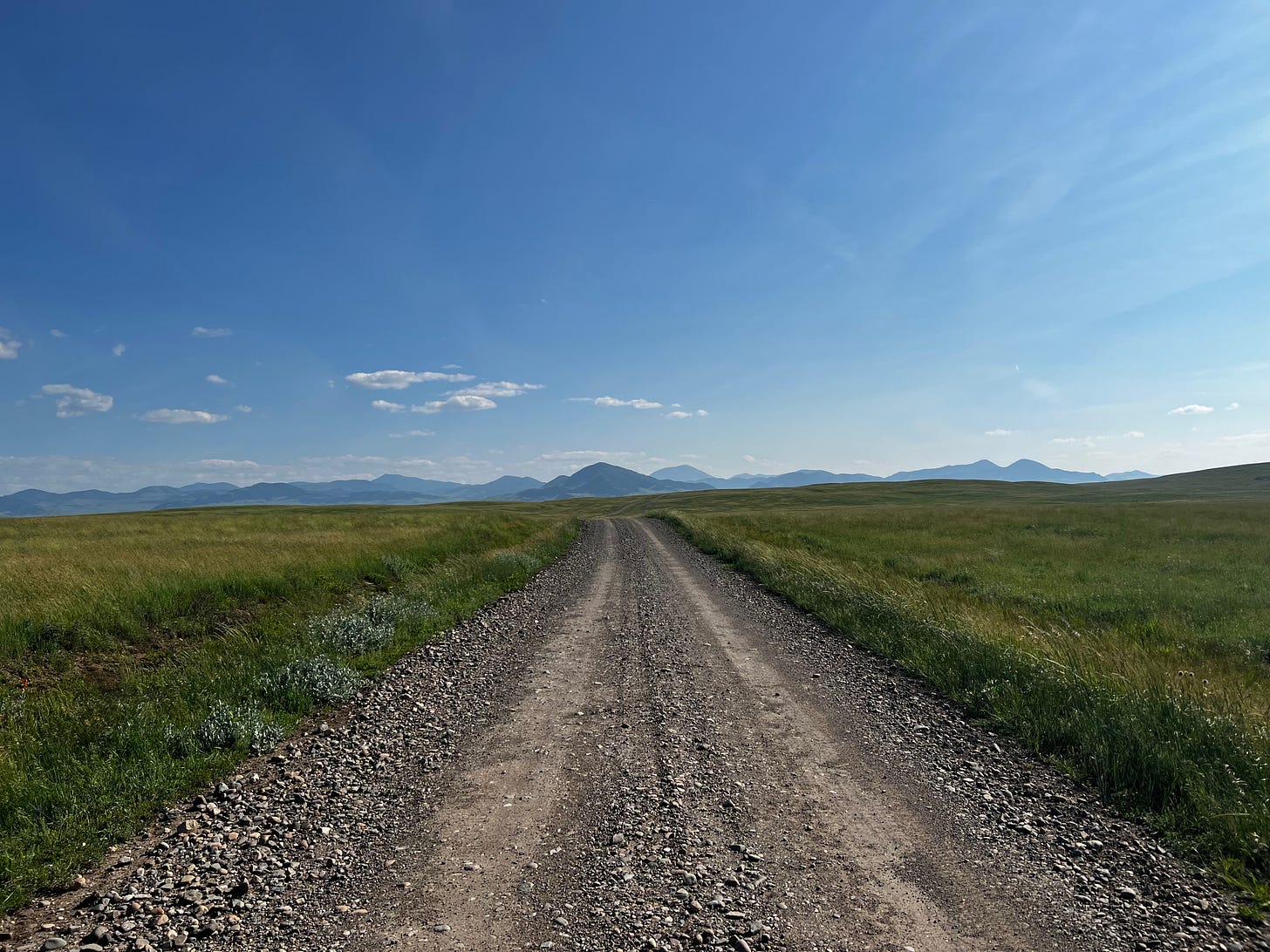
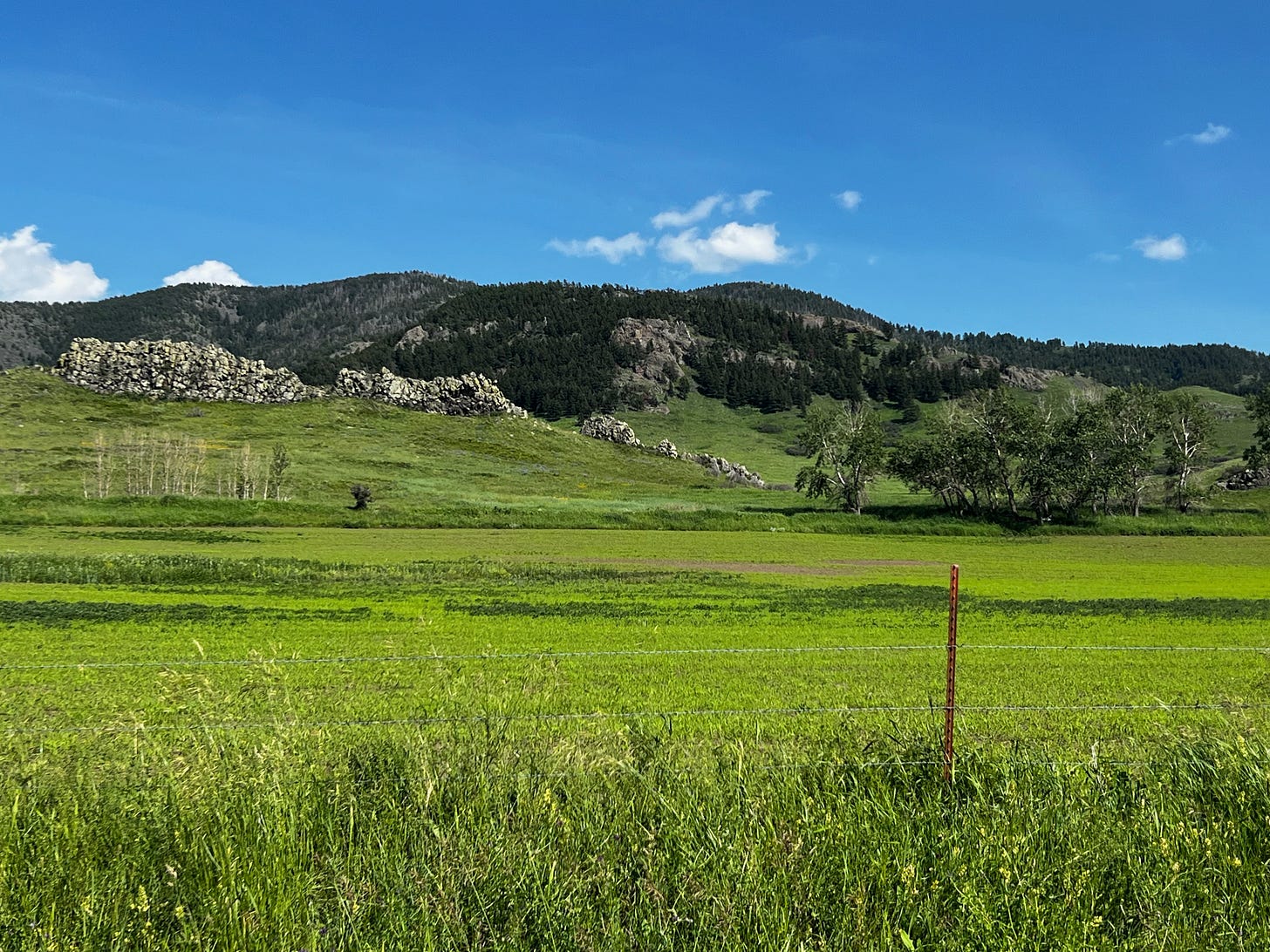

Crucial, what you are up to here. Much success.
I met a guy last night who is working through the process of legally deeding his house and land back to a local tribe in Virginia, both as "the right thing to do," and as "a great big 'fuck you' to Albemarle County." He hopes it will be a model that others can follow.
I have in mind a story where all the consumer-culture types have gone to space, and only the natives and the Amish are left down here.